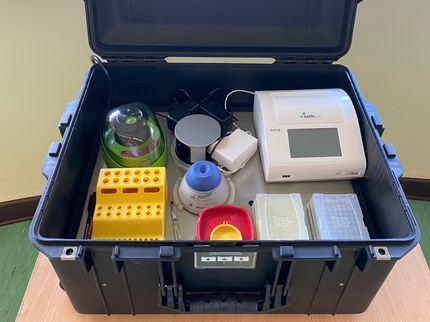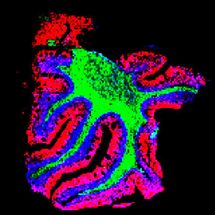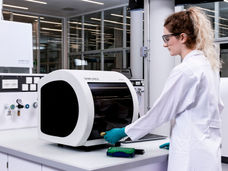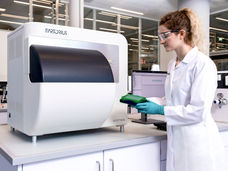Training bees to smell the coronavirus
A trained bee can detect an infected sample within a few seconds
Start-up InsectSense and Wageningen Bioveterinary Research have trained bees to extend their tongues when they smell the coronavirus. The coronavirus, like other diseases, causes metabolic changes in the body that causes a smell. Bees can be trained within minutes to recognize the scent of samples infected with SARS-CoV-2.
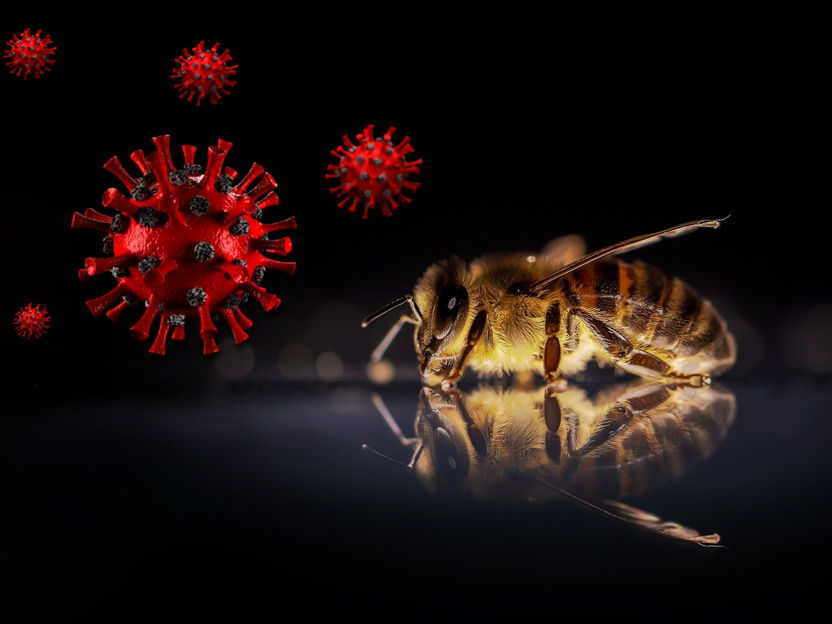
Technological start-up InsectSense and Wageningen Bioveterinary Research train bees to smell corona (Symbolic image).
pixabay.com
Bees can detect volatiles with a sensitivity of parts per trillion. For example, they find a flower a few kilometres away. Bees, like dogs, can learn to detect volatiles and odors, but with just a few minutes of training.
Sugar water reward
The bees were trained to detect SARS-CoV-2 infected samples in a Pavlovian conditioning method. Each time the bees were exposed to the scent from an infected sample, they received a sugar water solution reward. The bees extended their tongues to collect the sugar water solution. By repeating this action several times, the bees associated the sugar reward with the scent as the stimulus. With this repeated conditioning, soon enough bees started extending their tongues out for the scent alone, with no reward offered as a follow-up. A trained bee can detect an infected sample within a few seconds.
This research was conducted with more than 150 bees at the Biosafety laboratory of Wageningen Bioveterinary Research with different training setups to determine the most optimum training protocol. The samples used in the first experiments were collected from healthy and SARS-CoV-2 infected minks. In the experiments with the mink-samples, several bees indicated very good results and were able to distinguish the infected samples and those from healthy animals with very low numbers of false positives and false negatives. Similar great results were also achieved in later experiments with human samples as well.
In this project, scientists from the Laboratory of Entomology of Wageningen University and Université Paul Sabatier in Toulouse (France), supported the start-up with scientific advice.
Scaling BeeSense
The next step is to work on the scalability of this approach. Bees are globally accessible, so the only thing people need is a machine to be able to train bees. InsectSense already has developed the prototypes of a machine that can automatically train multiple bees simultaneously and a biosensor that deploys the trained bees for diagnosis. This technology, ‘BeeSense’, can be a very effective diagnostic system for low-income countries that face challenges in accessing infrastructure and high-tech technologies.
Biochip and machine learning
Apart from this technology, InsectSense is also now working with scientists from Wageningen University & Research on ‘LumiNose technology’, a biochip that involves using insect genes which can be applied for accurate detection of volatile substances. The technology is further integrated with machine learning technology for fingerprinting volatiles. This technology will test rapidly and will be non-invasive, cost-effective and highly accurate, and can even recognize the severity of a disease.
Other news from the department science
These products might interest you
Most read news
More news from our other portals
Something is happening in the life science industry ...
This is what true pioneering spirit looks like: Plenty of innovative start-ups are bringing fresh ideas, lifeblood and entrepreneurial spirit to change tomorrow's world for the better. Immerse yourself in the world of these young companies and take the opportunity to get in touch with the founders.
